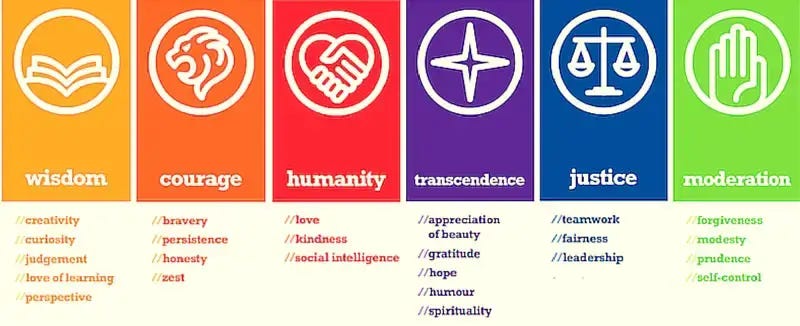I like to think of “culture” as human software designed to answer three existentially important questions:
What is real?
What is good?
How do things work?
When human groups fail to build a consensus around these vital questions, they suffer from disruptive levels of conflict and chaos (culture wars).
Every society benefits from having a culture that promotes “good” behavior by its citizens. While we have mostly left the morality/values business to our religious institutions, there was for much of our (U.S.) history an effort to promote civic virtues (“character building”) in the public schools.
The virtues that could serve as guideposts for being a good person were communicated through stories and fables that appealed to the young mind/learner such as
the tortoise and the hare (diligence, persistence)
the ant and the grasshopper (delay of gratification, frugality/thrift, planning and saving for the future)
George Washington and the cherry tree (honesty)
In the midst of our current heated disagreements about what is good and right in human affairs, many people reject the notion of teaching any system of ethics or morals in our public schools or the public square. For the sake of discussion, I would offer for consideration the work of Christopher Peterson and Martin Seligman.
These authors reviewed and synthesized the world’s various moral/ethical codes as part of their research on positive psychology. They found an impressive degree of overlap and agreement among the “higher” values of human groups/societies across time and geography. Based on their research, they define the following six universal human virtues:
Wisdom
Courage
Humanity
Transcendence
Justice
Moderation
Peterson and Seligman argue that these character virtues are so widely represented across human history and geography because they serve a surviving-and-thriving function and so have been naturally selected (we’re talking Darwin’s theory of evolution here) and transmitted throughout the human population. When people act in alignment with these adaptive virtues, they feel good (what Peterson and Seligman call elevation). Living the virtuous life (eudaemonia) as prescribed by Aristotle is one of the two main pathways to happiness and well being (the other path being hedonia which is living the pleasurable life).
When a group or country is unable to come together in solidarity around core cultural values and ethical/moral principles, it creates a deep sense of chaos and division. Defining how a good person behaves and what virtues they express in action is a foundation for building a good society and a good life for all.
You can survey your character strengths and learn more about the virtues model at this site




Concise and powerful. Couldn’t agree more with your points, especially about how these adaptive virtues can be taught. I’m lucky enough to be married to a woman who deduced to take on homeschool for our children and virtue/character is a core aspect of her curriculum. Might be one of the many reasons we are seeing a culture shift away from general education system.